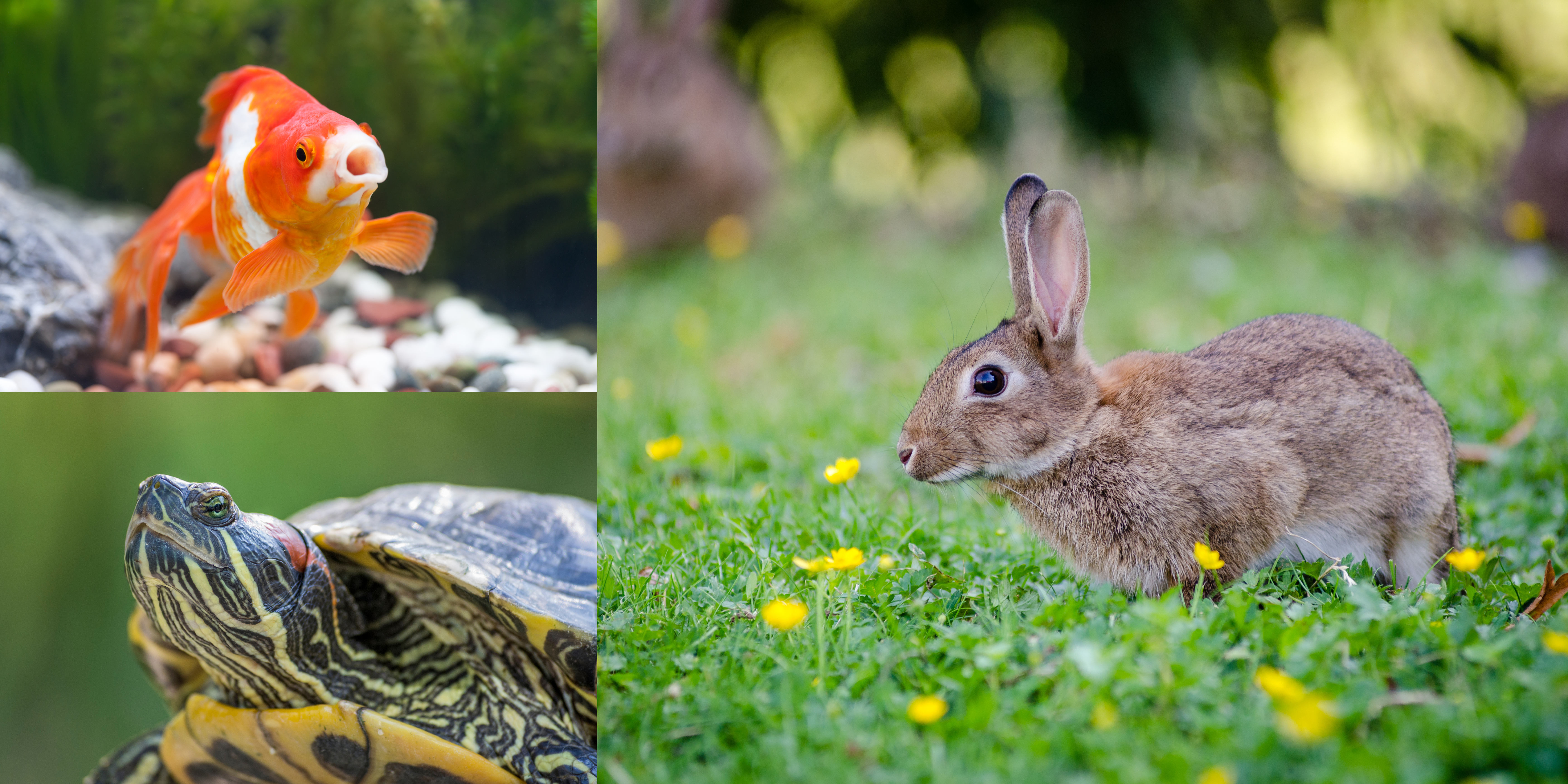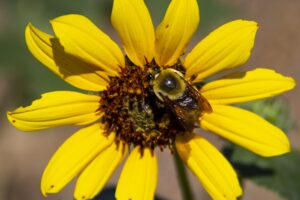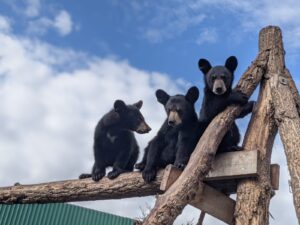by Chelsea Blyth
The release of domesticated animals into the wild, such as rabbits, amphibians, and cats, has far-reaching negative consequences for both the environment and native wildlife. This article explores the various adverse effects of this practice, including the spread of diseases, disruption
of ecosystems, attraction of predatory animals, contribution to overpopulation, demonstration of irresponsible pet ownership, abandonment, and animal cruelty. Additionally, it highlights the legal implications associated with releasing domesticated animals into the wild.
Spread of Diseases: Rabbit Hemorrhagic Disease and More
Releasing domesticated animals into the wild, particularly rabbits, poses a significant risk of spreading diseases to native wildlife populations.1 One prominent example is Rabbit Hemorrhagic Disease (RHD), a highly contagious and often fatal viral infection. This disease can cause devastating losses in wild rabbit populations, disrupting the delicate balance of ecosystems. Furthermore, other diseases carried by domesticated animals can spread to wildlife, leading to increased mortality rates and population decline.
Disruption of Natural Populations and Vegetation
The introduction of domesticated animals into natural habitats can have a profound impact on the native flora and fauna. For instance, domesticated rabbits can overgraze vegetation, leading to the destruction of plant species that are essential for various wildlife. This disruption can
result in a decline in food sources, nesting habitats, and cover, directly affecting native species’ survival and altering ecosystem dynamics.
Attraction of Predatory Animals to Populated Areas
The presence of domesticated animals in the wild can attract predatory species, such as coyotes, into populated areas. These predators are lured by the easy availability of prey, leading to increased encounters with humans and potential conflicts. The increased proximity between
wildlife and human settlements can jeopardize both human and animal safety, leading to negative outcomes for all parties involved.2
Contribution to the Global Overpopulation Problem
The release of domesticated animals into the wild exacerbates the global overpopulation problem faced by numerous animal species. Domesticated rabbits, for example, reproduce rapidly and can outcompete native species for resources. This excessive population growth disrupts natural ecosystems, as these animals consume resources that would otherwise support a more diverse range of wildlife.
Irresponsible Pet Ownership, Abandonment, and Animal Cruelty
The release of domesticated animals into the wild is a clear demonstration of irresponsible pet ownership. It represents a failure to provide proper care, responsible breeding practices, and appropriate containment for these animals. Abandoning pets in the wild is not only cruel but also
increases the risks of predation, disease transmission, and starvation. It is essential for individuals to understand the lifelong commitment involved in owning a pet and to seek responsible alternatives when circumstances change.
Legal Implications
Releasing domesticated animals into the wild is illegal in many jurisdictions due to the detrimental effects on ecosystems and native wildlife. Violators of such laws can face legal consequences, including fines and penalties.3 It is crucial for individuals to be aware of the legal framework surrounding the release of domesticated animals and to explore responsible alternatives, such as adoption, surrender to animal shelters, or finding appropriate foster homes.
Conclusion
The negative impact of domesticated animals being released into the wild cannot be underestimated. Whether it is the introduction of diseases, contribution to the overpopulation problem, or demonstration of irresponsible pet ownership, these practices pose a significant threat to both the environment, wildlife and other domesticated animals. To protect our ecosystems and promote animal welfare, it is essential for individuals to act responsibly and refrain from releasing domesticated animals into the wild.
Footnotes
- Canada, Humane. “Canada’s Cat Overpopulation Crisis.” Humane Canada, July 13, 2022. https://humanecanada.ca/our-work/focus-areas/companion-animals/cats-in-canada-2017-a-five-year-review-of-cat-overpopulation/.
- Government of Canada, Canadian Food Inspection Agency. “Provincial and Territorial Legislation Concerning Welfare of Livestock.” Canadian Food Inspection Agency, July 19, 2022. https://inspection.canada.ca/animal-health/terrestrial-animals/humane-transport/provincial-and-territorial-legislation-concerning-/eng/1358482954113/1358483058784.
- Government of Canada, Canadian Food Inspection Agency. “Rabbit Haemorrhagic Disease (RHD) Fact Sheet.” Canadian Food Inspection Agency, April 21, 2023. https://inspection.canada.ca/animal-health/terrestrial-animals/diseases/immediately-notifiable/rhd/fact-sheet/eng/1526322490096/1526322490704.






